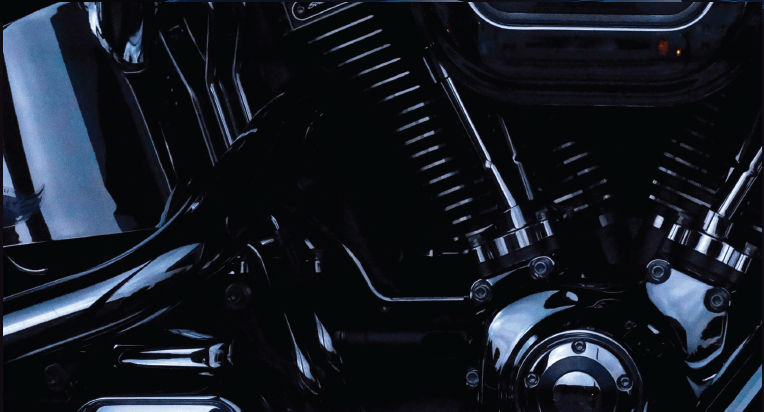Coatings allow to maintain and improve the properties of a material. In this context, they can also protect against the effects of the environment.
Therefore, when damage occurs, usually in the form of microcracks, environmental elements such as water and oxygen may penetrate the coating and cause material damage or deterioration.
Micro cracks in coatings can cause mechanical degradation or delamination of the coating, and electrical degradation in fiber-reinforced composites and microelectronics. Although they are so small in scale, repairing this type of damages are often difficult and costly.
Therefore, a self-healing coating (self-repairing coating), automatic recovery properties (such as mechanical, electrical and aesthetic properties) can be very useful in terms of extending the life of the coating, therefore material.
Most of the approaches described in the literature regarding self-healing materials are seen as microencapsulation and the addition of reversible physical bonds such as hydrogen bonding, ionomers and chemical bonds. Microencapsulation is the most common method for developing self-healing coatings.
The capsule approach using microencapsulated diclopentadiene (DCPD) monomer and Grubbs catalyst in self-healing epoxy polymers was later adapted to epoxy adhesive films commonly used in the aerospace and automotive industries for bonding metallic and composite substrates.
Recently, microencapsulated metal or car bon black liquid suspensions have been used to restore electrical conductivity in multilayer microelectronic devices and battery electrodes. However, the use of microencapsulation for the restoration of electrical properties in coatings is limited.
On the other hand, liquid metal micro-droplets are suspended in silicone elastomer to create stretchable electrical conductors that mimic the elasticity of the soft biological tissue, maintaining its electrical conductivity when damaged.
The most common application of this technique has been proven in polymer coatings for corrosion protection.

Protection of metallic materials against corrosion is of great importance on an economic and ecological scale. To prove the effectiveness of microcapsules in polymer coatings for corrosion protection, researchers encapsulated a number of materials.
These materials include monomers such as isocyanates, DCPD GMA epoxy resin, flaxseed oil, and tung oil. As mentioned above, for encapsulation of the nucleus, phenol formaldehyde, urea formaldehyde, dendritic or PAMAM, melamine formaldehyde, etc. Shell materials such as.
Each shell material has its own unique qualities. Microencapsulation has been proven to effectively protect metal against corrosion and prolong the life of a coating.
Self-healing coatings heal both surface scratches and mesoscopic damage (eg microcracks and cavitation). Self-healing is a two-stage process as a gap closure followed by healing. Self-healing functionality ensures a high degree of scratch repair and gloss recovery even in repeatedly damaged areas.
For example, self-healing epoxies can be included in metals to prevent corrosion. In a test, a substrate metal showed great deterioration and rust formation after 72 hours of exposure, but after self-healing epoxy coating, no visible damage was detected 72 hours after the same exposure.

These coatings can fix damage spontaneously, reduce inefficiency caused by deterioration over time, and also prevent costs caused by material failure.
The ability of self-healing coatings to self-repair local damage caused by external factors is an important factor contributing to the attractiveness of this issue. Selfhealing coatings include polymer layers, silica-organic layers, conversion layers, metallic layers, ceramic layers.
These coatings intelligently respond to mechanical or chemical damage caused by the external environment and reproduce their original properties, including adhesion to the substrate and integrity. Self-healing ability is a particularly vital feature for coatings designed to protect the material of a building against corrosion.
Self-healing anti-corrosion coatings are produced using macromolecular compounds such as ceramics, metals, composites. The properties of such coatings are activated by appropriate stimuli such as temperature, radiation, pH, pressure changes and / or mechanical movement.
Prepared by: B. Serhat Cengiz
References
• White SR, Sottos NR, Geubelle PH, Moore JS, Kessler MR, Sriram SR, et al. (February 2001). “Autonomic healing of polymer composites”. Nature. 409
(6822): 794–7. doi:10.1038/35057232. PMID 11236987.
• Aïssa B, Therriault D, Haddad E, Jamroz W (2011). “Self-Healing Materials Systems: Overview of Major Approaches and Recent Developed Technologies”.
Advances in Materials Science and Engineering. 2012: 1–17. doi:10.1155/2012/854203.
• Chen Y, Guan Z (September 2014). “Multivalent hydrogen bonding block copolymers self-assemble into strong and tough self-healing materials”.
Chemical Communications. 50 (74): 10868–70. doi:10.1039/C4CC03168G. PMID 25090104.
• Binder WH (2013). “Self-Healing Ionomers”. Self-healing polymers : from principles to applications (1 ed.). Weinheim: Wiley-VCH Verlag GmbH. pp.
315–334. doi:10.1002/9783527670185.ch13. ISBN 978-3-527-33439-1.
• Varley RJ, Zwaag SV (2008). “Development of a quasi-static test method to investigate the origin of self-healing in ionomers under ballistic conditions”.
Polymer Testing. 27: 11–19. doi:10.1016/j.polymertesting.2007.07.013.
• https://en.wikipedia.org/wiki/Self-healing_material#Self-healing_coatings
• https://www.corrosionpedia.com/definition/1480/self-healing-coating

 Protection of metallic materials against corrosion is of great importance on an economic and ecological scale. To prove the effectiveness of microcapsules in polymer coatings for corrosion protection, researchers encapsulated a number of materials.
These materials include monomers such as isocyanates, DCPD GMA epoxy resin, flaxseed oil, and tung oil. As mentioned above, for encapsulation of the nucleus, phenol formaldehyde, urea formaldehyde, dendritic or PAMAM, melamine formaldehyde, etc. Shell materials such as.
Each shell material has its own unique qualities. Microencapsulation has been proven to effectively protect metal against corrosion and prolong the life of a coating.
Protection of metallic materials against corrosion is of great importance on an economic and ecological scale. To prove the effectiveness of microcapsules in polymer coatings for corrosion protection, researchers encapsulated a number of materials.
These materials include monomers such as isocyanates, DCPD GMA epoxy resin, flaxseed oil, and tung oil. As mentioned above, for encapsulation of the nucleus, phenol formaldehyde, urea formaldehyde, dendritic or PAMAM, melamine formaldehyde, etc. Shell materials such as.
Each shell material has its own unique qualities. Microencapsulation has been proven to effectively protect metal against corrosion and prolong the life of a coating.
